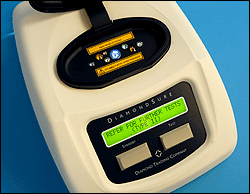Simulants and synthetic Diamonds
It is important to distinguish that a synthetic diamond is a true diamond created by a technological process, whereas a diamond simulant is defined as a non-diamond material that is used to simulate the appearance of a true diamond.
The gemological and industrial uses of diamond have created a large demand for rough stones. A portion of this demand is now being met by synthetic diamonds, artificially-made diamonds which have the properties of natural diamonds. This process has historically produced industrial-grade diamonds, but synthetic diamond producers have recently begun to produce diamonds with high enough quality to penetrate the gem diamond market. Diamonds have been manufactured synthetically for over fifty years.
A diamond's gem quality, which is not as dependent on material properties as industrial applications, has invited both imitation and the invention of procedures to enhance the gemological properties of natural diamonds. Materials which have similar gemological characteristics to diamond but are not mined or synthetic diamond are known as diamond simulants. The most familiar diamond simulant to most consumers is cubic zirconia (commonly abbreviated as CZ); recently moissanite has also gained cachet but has often been mischaracterized as a diamond simulant although it is sold and retailed as a replacement for diamond. Both CZ and moissanite are synthetically produced. However CZ is a diamond simulant. Diamond enhancements are specific treatments, performed on natural diamonds (usually those already cut and polished into a gem), which are designed to better the gemological characteristics of the stone in one or more ways. These include laser drilling to remove inclusions, application of sealants to fill cracks, treatments to improve a white diamond's color grade, and treatments to give fancy color to a white diamond.
Currently, trained gemologists with appropriate equipment are able to distinguish natural diamonds from all synthetic and simulant diamonds, and identify all enhanced natural diamonds. The established natural diamond industry has a vested interest in maintaining the distinction between natural diamonds and other diamonds, and has made significant investments toward that end. However, as manufacturing technology improves, synthetic diamonds may become indistinguishable from natural diamonds, and new techniques for creating and treating simulants (such as coating them with a very thin diamond-like layer of carbon) are making it increasingly difficult to distinguish simulants from real diamonds.
The DTC/GIA DiamondSure The HRD D-Screen














